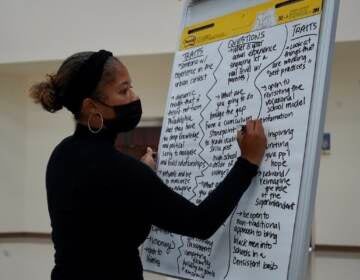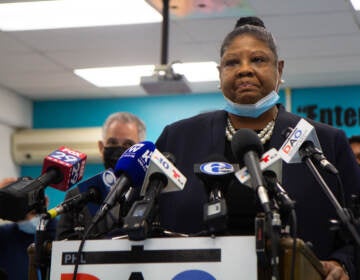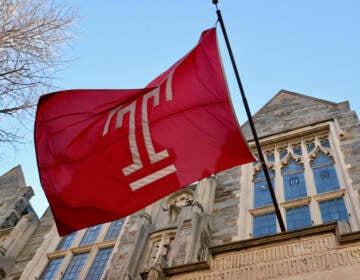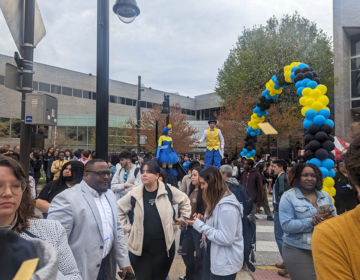Superintendent William Hite may have saved Philly schools. Was it enough?
Hite’s decade-long tenure tells us a lot about the evolution of the school reform movement, shifts in Philly politics, and the merits of an above-the-fray leadership style.
Listen 5:39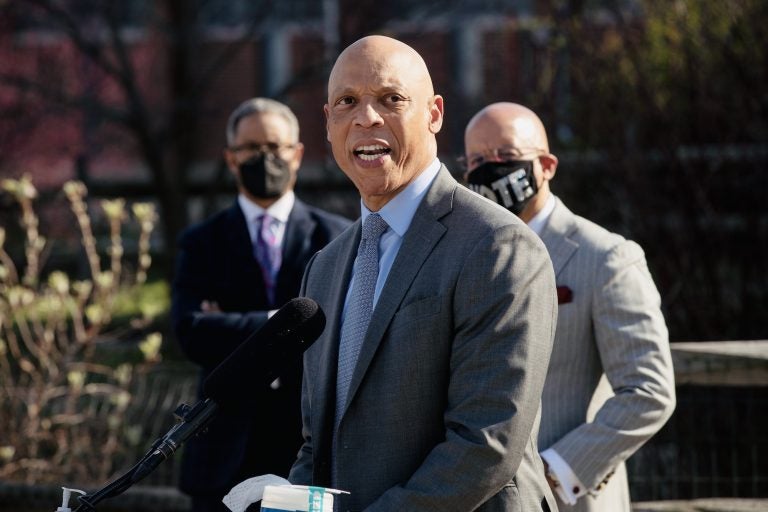
School District of Philadelphia Superintendent William Hite addresses the press outside Martin Luther King High School on April 5, 2021. (James Robinson/Pennsylvania Senate Democratic Caucus)
Over his nearly decade-long tenure as Philadelphia’s superintendent, William Hite proved a master of de-escalation.
He’d often defang a tough question by first thanking the person for their query. When referring to antagonists, Hite rarely used names. They were “individuals.”
Among the departing superintendent’s rhetorical defaults, Farah Jimenez loved one in particular — one that seemed to capture his style.
“He would always respond to comments with, ‘Yes, and,’” Jimenez, a former School Reform Commission member, recalled.
Those who spent any time around Hite can hear that phrase in his voice, with a slight southern drawl extending the second word.
“Yes, aaaaaand…”
“The ‘yes’ is ‘I hear you,’” said Hite in a recent sit-down interview. “‘And here’s something else to consider or think about.”
In Hite’s hands, the words communicated a sense of partnership — even amid stark, sometimes intractable, differences.
The phrase also happens to be a staple of improv comedy, a two-word building block that has evolved into a central tenet. In a scene without structure or direction, “yes, and” is the anchor. It allows the players — through affirmation — to build something from nothing.
It’s a phrase that not only signals agreement, but one that keeps the scene alive when it might otherwise careen toward implosion.
During Hite’s near-decade as head of a public school system that’s seen enrollment declines, charter school growth, toxic labor relations, a major governance change, and staggering infrastructure woes, amid countless other challenges, one can imagine the appeal of those two words.
“Yes, and.”
Steering the ship
Hite recently announced that this school year — his tenth in the city — will be his last as superintendent of the School District of Philadelphia. It was an unusually long run in a system that tends to churn through top brass.
The Virginia native came to Philadelphia by way of suburban Maryland, arriving at a time of acute crisis. The district faced leadership turmoil, poisonous finances, and fierce political headwinds — all while under the auspices of the state-controlled School Reform Commission.
Ten years later, the district has stability at the top, and in its budget. Broadly speaking, it enjoys better relationships with the politicians that determine its fiscal fate. And the state-held board has given way to a local one.
All of that happened under Hite’s watch. Admirers attribute those changes, in part, to his clear-eyed, conciliatory style. He was the test case for an above-the-fray leadership style, one that eschewed confrontation and brinkmanship.
“I’m not trying to embarrass you,” Hite explained. “If people are looking for a fight or a confrontation, I’m not the person.”
Skeptics question how central Hite was to the district’s stabilization. And they note — with ample evidence — that the system still seems stuck in a crisis cycle. Peel away one structural problem in Philadelphia’s school system, and another lurks underneath.
It would not be fair to blame any of those crises on Hite entirely. The district’s ongoing building woes stem from decades of neglect. COVID and its resulting labor shortage strained even the wealthiest school districts.
Still, one wonders how far “yes, and” can get a district that suffers from such routine, structural deprivation.
Perhaps it staves off extinction. But what happens after that? Can a peacemaker approach ever achieve the kind of reordering that would make a large urban district look, feel, and perform like the suburban districts in its orbit?
Or maybe the lesson of Hite’s decade is that superintendents aren’t really responsible for — or capable of — tectonic change.
Perhaps they don’t shift currents. They merely steer ships.
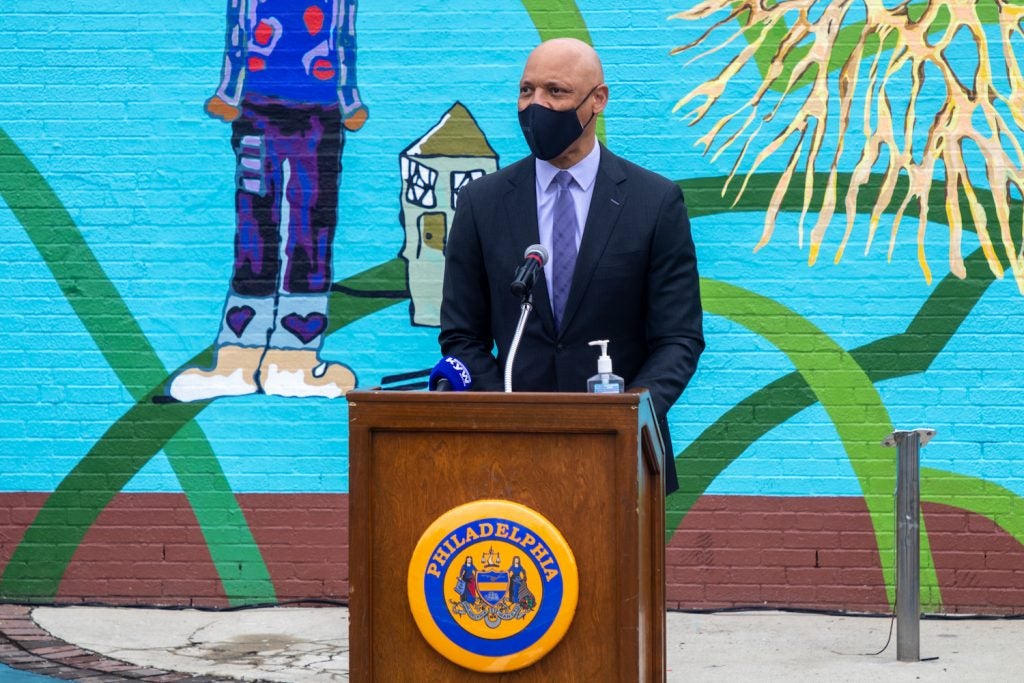
Someone who could ‘take it’
Even among those who worked most closely with Hite, you won’t find many colorful anecdotes.
It’s the absence of those anecdotes that stands out to Naomi Wyatt, the district’s chief of staff from 2015 to 2020 and its chief talent officer the two years prior.
Wyatt spent four years in the cabinet of former Gov. Ed Rendell, a man legendary for his excesses and eccentricities.
“Bill is the opposite of that,” said Wyatt. “He didn’t have some emotional tic you had to work around.”
Ask people for a Hite story and expect a long pause. Ask people for their impression of Hite, and, whether they view him favorably or not, they almost all give a variation on the same theme.
“He is an incredibly gracious person,” said Wyatt. “He was just always calm and steady.”
That appealed to the people who hired Hite in 2012.
“You wanted someone who was super calm — someone who could just take it,” said Feather Houstoun, who helped select Hite as a member of the SRC.
“It” was the steady stream of scorn and controversy that awaited any incoming superintendent.
Prior to Hite’s arrival, the SRC — a governance board composed of three gubernatorial appointees and two mayoral appointees — had begun a process that would lead to mass school closures.
Leadership was a carousel. The last permanent superintendent, Arlene Ackerman, left amid a standardized test cheating scandal and a feud with City Hall, defiantly taunting her bosses as she departed. For six months, a contracted recovery officer held the reins.
As Hite arrived, the district stared down a financial storm caused by the end of federal stimulus funds, state budget cuts, and a steady migration of students to charter schools. District leaders had to borrow hundreds of millions just for operating expenses, all while cutting staff bone-deep and forcing contract concessions. A plan to decentralize management caused observers to wonder if the School District of Philadelphia would cease to exist.
“It was a very, very bleak time,” said Lori Shorr, chief education advisor to then-mayor Michael Nutter.
Internally, Shorr said, officials talked about contingency plans if the district’s financial position grew so dire it could no longer operate. Would schools need to close? Would they send kids to recreation centers during the day?
“During all this we’re doing a superintendent search,” Shorr said. “We really wanted somebody who could convey a sense of: ‘I got this.’”
Hatchet man
Hite came into the district as a kind of hatchet man, tasked with making, or at least being the public face of crushing cutbacks. Within a year of Hite’s arrival, the district laid off thousands of employees and closed 24 schools, a realignment driven by the expansion of school choice.
It was a staggering number of closures, but about a quarter of what a consulting group originally proposed and about half of what the superintendent called for in his original plan.
The closings were emblematic of Hite’s early years. His administration made disruptive austerity cuts, all while staving off existential threats that seemed, at one time, plausible.
At a time when reformers favored the rapid expansion of charter schools, many cities like Philadelphia flirted with the idea of radically restructured school districts in the mold of what happened in New Orleans after Hurricane Katrina.
Hite came to the district with a reformer’s reputation and pedigree. A former physical education teacher and administrator, Hite went through the Broad Academy training program for superintendents, known for producing leaders friendly to charter schools and privatization. Like many reformers of the time, Hite said he was neutral on who ran city schools, as long as a “portfolio” of good options existed.
But he also had to stop the bleeding in a wounded district
“[The consultants were] recommending that there be large swaths of the district turned over to private entities,” recalled Hite. “It was really about, ‘How do you come in and create a sense of stability in a district that feels like it’s in turmoil?’”
In Hite’s words, the plan was to “get to zero,” meaning an even balance sheet.
Still, by 2014, Philadelphia’s public schools remained in a financial tailspin. Hite and city leaders had to ask the state Legislature for permission to pass a city cigarette tax that would generate enough new revenue to keep schools open for a full year without drastic cutbacks.
It’s a situation many Philadelphia school leaders have faced before. Unlike every other school district in Pennsylvania, the School District of Philadelphia cannot raise its own revenue. To close an imminent budget gap, superintendents must negotiate with city and state leaders.
Grasping for leverage, superintendents have long relied on a simple threat: Without extra money, we’ll have to shut the system down. It’s a tactic that dates back to at least the early 1970s.
Hite, by his own admission, was reluctant to go down that road. In the summer of 2014, he tiptoed toward closure talks, but only after two years of one-time budget fixes, reserve spending, and cutbacks. Meanwhile, the SRC attempted to cancel its contract with the Philadelphia Federation of Teachers and unilaterally impose new economic and working conditions. That set off a stalemate where city educators went without raises, leading to years of strained labor relations.
Even in those dire days of 2014, Hite presented total system closure as an option alongside more staff layoffs.
To Hite, closure threats were a way of “leveraging our children in a way that I didn’t think was going to be beneficial.”
Back to zero
Slowly, the district’s financial position started to improve.
A growing economy boosted city and state coffers. Democratic Gov. Tom Wolf unseated Republican Tom Corbett and went to war with the Legislature to drive more money into education. Mayor Jim Kenney successfully fought for increases at the city level, partly to augment his argument that the district should have its own school board again.
Some question whether Hite deserves much credit for the district’s improving budget. Councilmember Helen Gym, a longtime education advocate and frequent Hite critic, credits the political blowback created by school closures and staff cuts. In her opinion, those “galvanizing” moments led to the election of politicians more amenable to school funding.
“That was the will of the people,” said Gym. “Many of the actors were the same. Bill Hite was the same. The difference was the fact that people said, ‘Absolutely not.’”
That said, Hite developed real credibility in the halls of power. Even state Republicans, typically the district’s toughest audience, viewed Hite as an honest broker and responsible steward. Rather than punish the school district, legislators seemed open to cooperation — most notably adjusting a reimbursement formula on Philadelphia’s behalf so the district wouldn’t lose hundreds of millions in recurring revenue.
“We had to go convince people that we were worth investing in. And [Hite] was able to do that year after year after the initial cuts,” said former SRC chairman Bill Green.
Those dollars provided the financial stability the district long lacked, allowing it to add back staff and begin building new schools. By Hite’s final school year, the city’s teachers union said it had almost exactly as many members as it had when the superintendent arrived — despite a drop in the number of students.
In essence, the superintendent had gotten back to zero.
As Houstoun, a GOP nominee to the SRC and former cabinet member for Republican Gov. Tom Ridge, put it:
“The reputation of the district as relatively well-managed could very well have prevented much uglier things from happening.”
Gracious or aloof?
That Hite survived the first half of his tenure is a testament to his personality, perseverance, and political savvy. It is rare for a leader to be the public face of cutbacks while maintaining enough good will to reach the next phase.
“They kind of come, do the hard stuff, leave,” said Hite.
Still, the hard choices and trust-building of his early days were supposed to be preconditions to progress. And in that pivot, some say, Hite ran up against his limitations.
His calm leadership style won him many admirers, like former chief of staff Wyatt.
“He made it almost impossible to leave because he is an incredibly gracious person,” said Wyatt.
But implicit in that grace, some say, was a distaste for conflict and direct management — a tendency to recede.
“He has more of this high management style,” said Fernando Gallard, a former district spokesperson who worked under Hite and five other district leaders. “He would actually have the individuals under him do most of the work and get involved in the details. That was the big difference between [Hite and] the other superintendents.”
In his rush to detach, Gallard says, Hite could downplay real problems or come off as aloof. When dealing with issues that affect the day-to-day experience inside schools — exposed asbestos, construction mishaps, staffing shortages, trash pileups — one cannot expect to remain above the fray.
Hite leaves the district amid growing discontent from principals. His administration lost trust with many families over its bungled response to building hazards and inability to fully staff buildings — the latter of which was a recurring problem over his years as superintendent.
Some also felt Hite struggled to connect with the system’s core constituents, the majority Black and Latino parents who send their children to district and charter schools. Sylvia Simms, a parent advocate from North Philadelphia and former SRC member, liked Hite personally. But she feels Ackerman put more emphasis on grassroots family engagement.
“We was never at the table,” said Simms. “We are always dismissed. Nobody want to hear from those parents, those families, those communities.”
In some ways, that final criticism is the most surprising because Hite did seem to have an open mind.
He had a few identifiable policy preferences. For instance, Hite talked frequently and persuasively about the importance of early literacy. He leaned into small, experimental high schools. He talked the talk of school reform, often playing down debates over “governance.”
But compared to other superintendents, it’s hard to form a coherent and unchanging idea of what Hite stood for ideologically.
Even on hot-button issues like charter schools, his tenure suggests he was either content to reflect the mood of the moment or smart enough to avoid losing battles. When Hite arrived, reformers clamored for more choice. The district abided, and he became a strong proponent for giving charter operators the chance to run struggling district schools. The so-called “Renaissance” program spurred year after year of pugilistic battles in the middle years of his term.
But as the political winds turned against charters toward the end of his tenure — with the rise of a new board chosen entirely by progressive Mayor Kenney — Hite oversaw the quiet end of that program. During much of the Trump years, talks of charter-driven reform went from main event to background noise.
As he rode out that change, Hite deepend his reputation as a consensus builder, prioritizing systemic stability over any academic theory of change.
“He always stood for working through difficult situations in the best interest of kids,” said Chris McGinley, who served on the SRC and the local school board that supplanted it. “I don’t think he had a philosophy.”
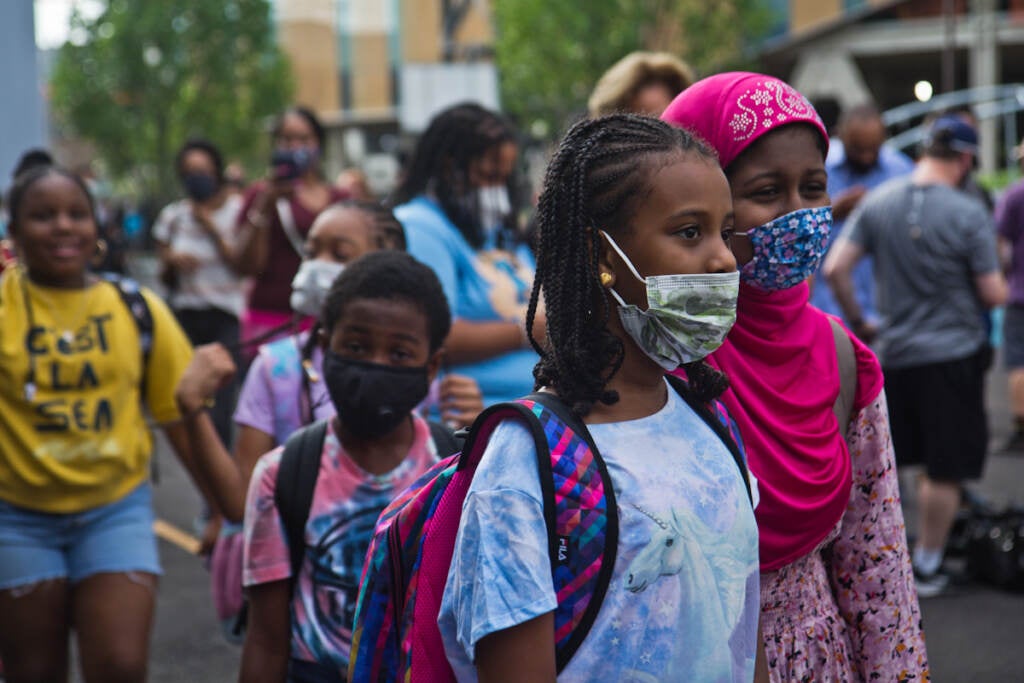
The Hite years by the numbers
If you’re looking for proof of progress in the Hite years, you can find some in the data. It just depends where you look and what expectations you carry.
The first cohort of students to enter high school during the Hite years had a four-year graduation rate of 64.6%, if you include students in alternative schools. The most recent cohort had a four-year graduation rate of 72.2% — although that comes in an era of rising graduation rates nationally.
Under Hite, the district placed an extra emphasis on early literacy. Some state test score data suggests incremental progress before COVID struck. From 2015 (the year state tests got harder) to 2019 (before the pandemic), the percent of third-graders reading at grade level or above stayed right around 33%. But the percent of students in the lowest reading tier — below basic — dropped from 33% to 30%.
The Philadelphia School Partnership, a nonprofit group that has prioritized school choice through major philanthropic donations, found that, under Hite, a growing percentage of Philadelphia students attending highly rated charter and traditional public schools. The number of students attending schools ranked in the top quartile by the state, as measured by state test scores, increased by 87%, according to former PSP head Mark Gleason. The number of students attending schools in the bottom quartile declined 15%.
On the financial front, Hite leaves the district in an indisputably better position than the one he inherited.
No longer careening from deficit to deficit, the district now publishes tidy five-year projections that show it in the black until 2025. After four decades of junk-bond status, the district has earned a series of credit upgrades. As a result, the district now spends three times as much on capital improvements as it did when Hite took over.
And the district — whether due to Hite’s leadership, shifting political moods, an improved economy, or a combination of all three — gets more money from local leaders. Before Hite arrived, the district received a $49 million grant from the city on top of normal tax revenues. This year, the grant was $256 million.
A mandate to reset
Past superintendents came in with mandates for change.
Ackerman was a hard-charging leader, who many viewed as an unyielding, and sometimes unscrupulous, voice for the district’s Black and Latino families. Before her, Paul Vallas brought an outsider’s flair and penchant for disruption.
But it is David Hornbeck, the last permanent leader before Vallas, who many see as the anti-Hite.
Hornbeck was ambitious and uncompromising. He threatened to close schools, sued the state for more money, and called Pennsylvania’s system of education funding racist — a charge that rankled Harrisburg Republicans.
After six years, he resigned, and those same Harrisburg Republicans used budgetary leverage to install the SRC.
“I have great admiration for David,” said Chris McGinley, who served in Hornbeck’s administration before he was a member of the SRC. “But confronting and taking stances where it’s ‘do or die’ means that you’re going to die once in a while.”
It’s hard, McGinley admitted, to serve in an urban school district and resist the pull toward indignation. It’s hard not to pick fights. In Hite, McGinley saw someone who “had the personal stamina to take the slings and arrows.”
“He is the finest public-facing superintendent that I’ve ever seen,” McGinley said.
William Hite came to Philadelphia not so much with a mandate for change, but a mandate to reset. Someone had to mop up the mess left by 15 years of tumult.
His supporters say that required someone who could mend fences — someone whose vision wasn’t so firm that it would cause friction. It required a leader willing to hedge on divisive issues like school choice, instead saying that all students should be able to attend a great school in their neighborhood.
To skeptics like David Hardy, a longtime charter school advocate, the endpoint of Hite’s tenure feels patently vanilla. “It was fiscal stability towards no goal other than fiscal stability,” he said.
And although its enrollment decline has flattened, the district is still losing students — roughly 20,000 total during the Hite years. Many buildings still lack basic upgrades. The vast majority of students do not read or do math at grade level.
But ask almost anyone — even Hite’s most ardent critics — if he leaves the district better than he found it. The answer is almost always the same:
“Well, I have to answer by saying ‘yes,’” said Jerry Jordan, teachers union president for the entirety of Hite’s tenure.
In other words…
Yes.
And?
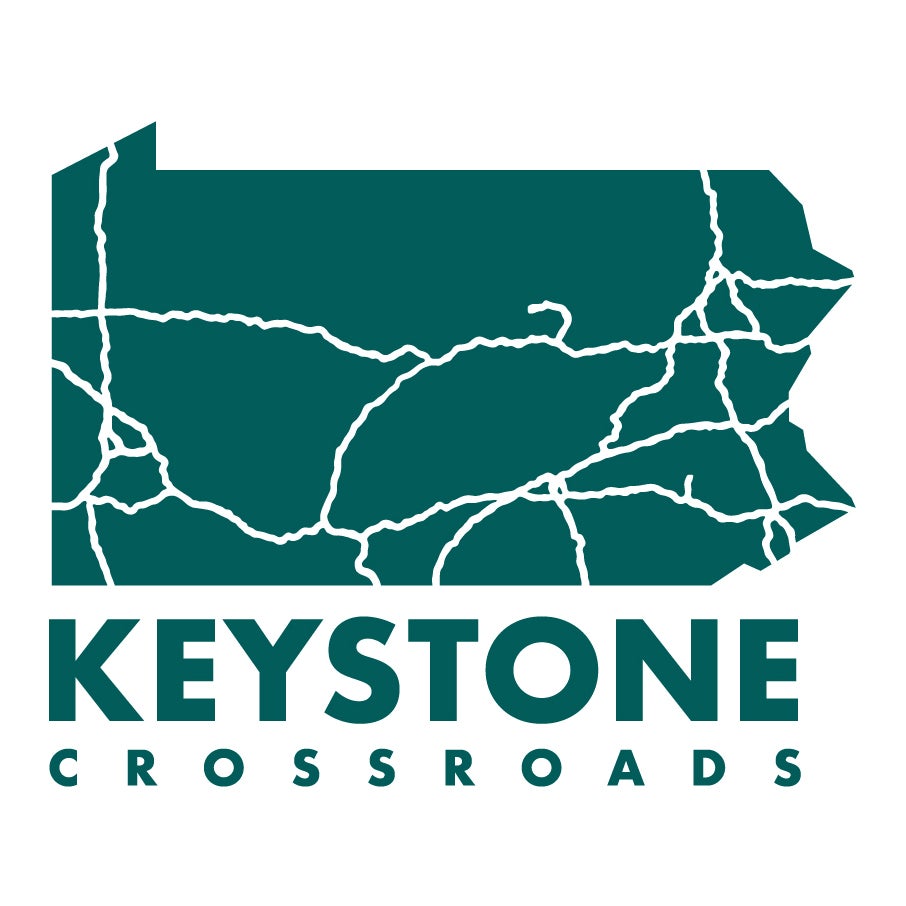
Get more Pennsylvania stories that matter
WHYY is your source for fact-based, in-depth journalism and information. As a nonprofit organization, we rely on financial support from readers like you. Please give today.




